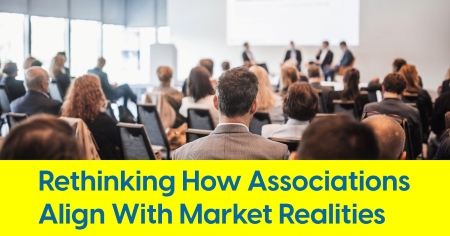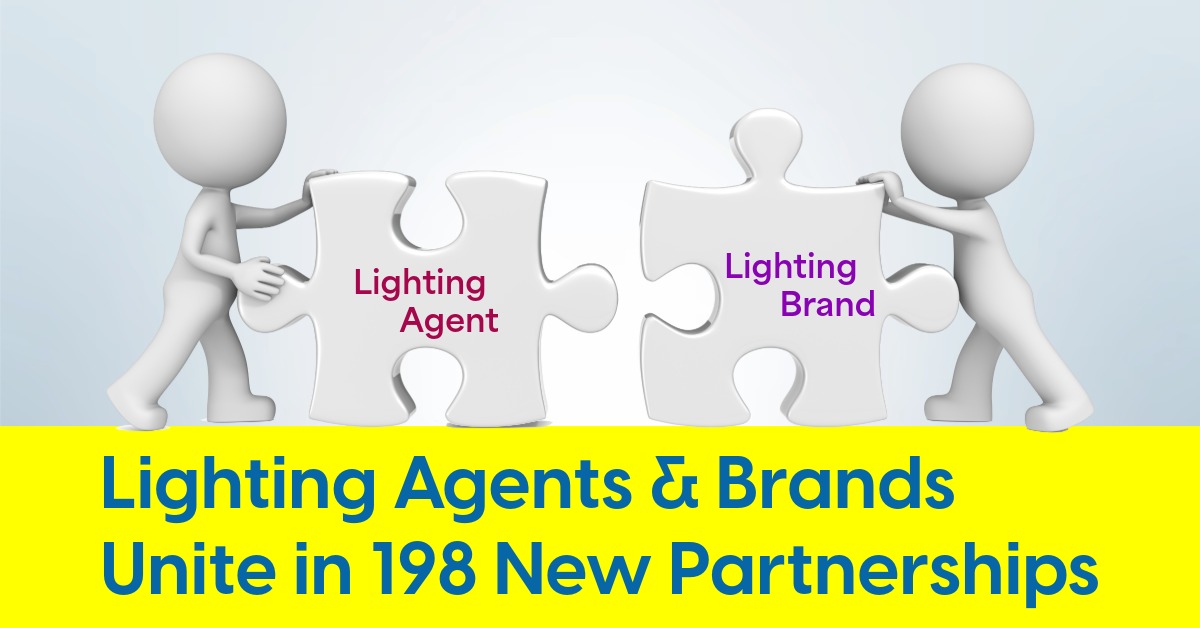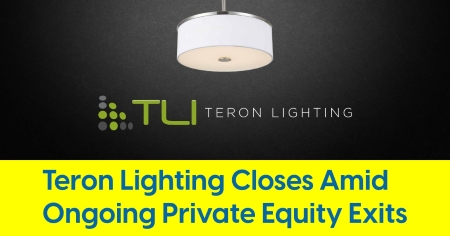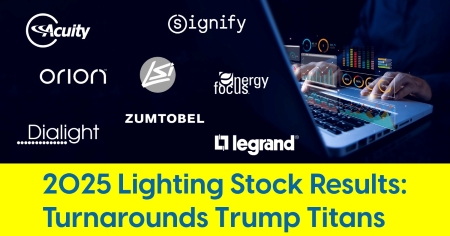May 8, 2024
One Year Out: A LightFair 2025 Manifesto
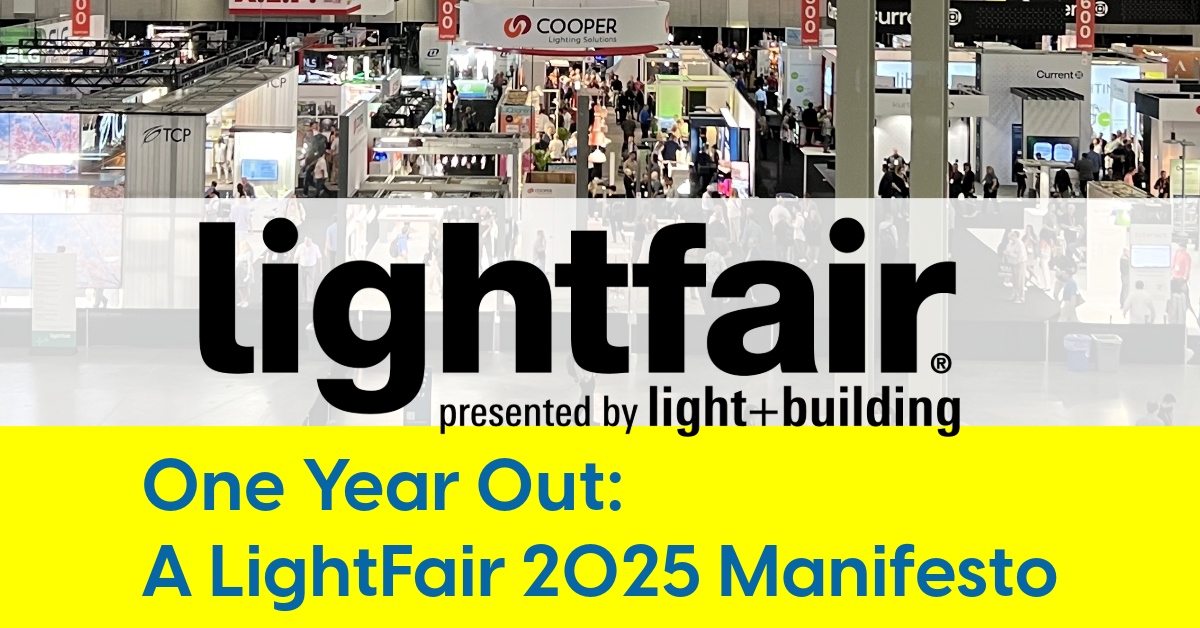
Author: Al Uszynski
New show organizers have work cut out: Attract influential lighting decision makers and big-name exhibitors
When I first learned in February that one-third of LightFair's ownership was shifting from ANDMORE (formerly known as International Market Centers) to Messe Frankfurt, I was intrigued but not convinced that it would herald significant change for the event. As a Boston sports enthusiast, moving on from ANDMORE reminded me of releasing Terry Francona or Bill Belichick after their historic championship runs were followed by three or four challenging years — perhaps a fresh leadership voice was necessary in the locker room.
However, as I engage more with the Messe Frankfurt team, I realize this isn’t merely a change in coaching or management. It marks a new direction for LightFair, historically North America's premier lighting industry trade show and conference. This endeavor to reinvent and reassert its prominence is no small task.
Like many lighting professionals, I cherish memories of LightFair's heydays during the 2010s, with annual gatherings of over 20,000 attendees in cities like New York, Las Vegas, Philadelphia, San Diego and Chicago. These events coincided with the LED boom and featured the launch of new products, new brands, and numerous innovations. Lighting people prepared, and primped, extensively — fresh haircuts, manicures, pedicures and snazzy new outfits. It was serious business that was reflected by the show’s significance in our professional lives.
But that all changed in 2020
Without delving into the extensive challenges the pandemic has imposed on the trade show and events industry, it's widely acknowledged that LightFair was significantly impacted. This is common knowledge among lighting people. Furthermore, the event has yet to fully recover.
In casual conversations, a notable number of industry insiders appear skeptical about LightFair's future prospects. Personally, I am not betting against LightFair; however, I remain undecided about betting on the event's long-term future at the Las Vegas sports books during my visit to LightFair 2025, scheduled for May 4-8, 2025. Nevertheless, my outlook on the event has grown more optimistic over the past 90 days.
Strong Mall Anchor Stores Boost Mall Traffic
In considering the complexities of trade shows, I’m tempted to oversimplify the view to one aspect: the influence of a select few exhibitors. Similar to the thriving Lenox Square mall near Inside Lighting's world headquarters, which boasts bustling anchor stores like Neiman Marcus, Apple and Nike, a trade show's success can often hinge on its marquee names.
While this view might seem overly simplistic, the analogy has merit. Malls losing anchor stores, then lose the next tier of retailers—like GAP, Limited, Abercrombie — and typically see a domino effect from there. Subsequently, smaller shops such as Forever 21 and even Cinnabon depart, eventually leaving behind only the fleeting seasonal allure of Spirit Halloween and unremarkable bourbon chicken options in the food court.
Thus, in my possibly over-simplistic opinion, the influence of a few key exhibitors cannot be overstated—they fundamentally shape the trade show's success. More on that later.
Messe Frankfurt Knows Events
Messe Frankfurt is not just dabbling in the lighting industry; it runs Light + Building, the largest lighting event globally, in Frankfurt, Germany. Just two months ago, this event drew more than 150,000 attendees, a significant increase from the 93,000 who attended in 2022.
But this isn't just about a German show organizer stepping into the U.S. lighting industry scene. Messe Frankfurt is a veteran in organizing about a dozen large-scale lighting events worldwide. In the U.S., Messe Frankfurt's North American hub is located just 10 miles from Inside Lighting's world headquarters in Atlanta. This seasoned team has expanded over the years, managing various industry events that span electronics, automation technologies, fashion, apparel, textiles, equipment and technology.
While the team at Messe Frankfurt US may lack the deep, longstanding connections with North American lighting stakeholders, they understand the intricacies of the trade show business and how to stage a successful event that resonates with attendees.
Messe Frankfurt have also demonstrated their ability to host a successful event without the presence of major players. For instance, despite the absence of Signify, the world's largest lighting company headquartered in Eindhoven just 200 miles away from Messe Frankfurt’s fairgrounds, Light + Building 2024 was still a success. Notably, the Netherlands and Germany are each Top 5 lighting markets for Signify, yet their absence did not seemingly diminish the event's impact.
The IES and IALD Influence:
LightFair, is also co-owned by the Illuminating Engineering Society (IES) and the International Association of Lighting Designers (IALD). These organizations boast deep connections with top-tier design firms, distributors and manufacturers and a significant attendee base—assets that could greatly enhance Messe Frankfurt's relationship-building with key industry stakeholders.
Their challenge is to use these connections effectively, encouraging more professionals to attend and more exhibitors to invest. This scenario echoes the age-old dilemmas relating to “the chicken or the egg?" and "If you build it, will they come?" Historically, these questions do not always find positive outcomes. However, given that LightFair significantly contributes to the revenues of IES and IALD, leveraging their influence could be crucial, providing these organizations with vital resources to achieve each organization’s goals.
Internationalizing the Event
Messe Frankfurt's sales teams, deployed worldwide, could help attract a global mix of exhibitors and specifiers, focusing especially on architectural manufacturers from Europe. To stay in good graces of major North American exhibitors, such a strategy needs to tread carefully with certain small, unproven, predominantly economical Chinese brands.
For the next iteration in Las Vegas, LightFair has expanded the show floor by 50% compared to the 2023 event. LightFair’s vision includes leveraging Messe Frankfurt's extensive sales partner network spanning 178 countries across 28 subsidiaries and over 50 sales partners. Transitioning to a biennial schedule, alternating with Light + Building, allows exhibitors to maximize their impact while reducing annual budgetary constraints.
LightFair will also be introducing a new direction and trend area that will showcase cutting edge trends in lighting design and technology. The all-new Hosted Specifiers/Buyers Program will ensure high quality attendees leading to meaningful connections. Brands will reach a targeted audience of industry professionals aiming to maximize return on investment.
“We're elated by the enthusiasm surrounding our partnership with IALD and IES for the revamped LightFair 2025! With a renewed focus on innovation and aligning with Light + Building brand, Messe Frankfurt is dedicated to curating an unparalleled event experience. The overwhelming positive feedback and support from our loyal exhibitors have been inspiring, and we want to assure them that their voices have been heard. "
— LaToya Gooding, Senior Show Manager, Messe Frankfurt
Does it all boil down to getting certain key exhibitors back?
The impact of a few key exhibitors withdrawing from LightFair in recent years cannot be overstated. Just seven weeks before LightFair 2021, Acuity Brands announced its withdrawal and they haven’t returned. Six months prior to LightFair 2023, Signify and Cooper Lighting Solutions pulled out. Moreover, after a rebranding launch as Current at LightFair 2022, Current has not returned to the event.
Attracting key exhibitors back onto the LightFair show floor is critical. Recurring criticisms while LightFair was booming in the 2010s was that it was becoming increasingly costly for exhibitors and also that it had become an agent-heavy event. Let’s quickly explore those two aspects:
Cost of Exhibiting:
The cost of exhibiting presents a significant hurdle. Beyond the expense of booth space at the convention center, other costs include drayage, utilities, employee travel and a myriad of related fees. These expenses, coupled with the substantial human resources involved in planning, designing, coordinating, shipping, assembling, and managing a booth—sometimes for a modest 10-by-20-foot space—can require hundreds of hours of company labor, making participation in LightFair a major undertaking.
LightFair is taking steps to address costs. As the LightFair sales team is preparing to open exhibitor sales for its 2025 event, they are introducing exhibitor-friendly changes. The organization recently announced a new pricing structure in partnership with a soon-to-be-named general service contractor. Exhibitors can anticipate more affordable participation costs, flat-rate drayage and electrical packages.
With the rising popularity of LEDucation, exhibitors have embraced this smaller-scale show widely attended by designers, which also boasts an incredibly low cost to exhibit compared to large-scale convention center events. However, feedback at Light + Building revealed that designers highly value experiencing lighting in a built environment, rather than the condensed 7-foot by 4-foot areas in a Hilton ballroom.
Furthermore, companies large and small have taken LightFair out of its annual marketing budget, so reinvesting will mean committing significant resources that might not have been previously allocated for a large trade show.
Over the next six to eight months LightFair organizers will aim to convince a litany of potential exhibitors that ROI comparisons between LEDucation and its offerings are apples to oranges – and that allocating significant funds to LightFair will be a worthwhile investment.
The Agent Factor:
Although agents, both large and small, heavily attended LightFair in the past, often loitering within their main partners' booths for extended periods, LightFair was never intended solely for agents. The event must aim to attract design professionals, electrical and lighting distributors, installers, integrators, and others involved in specifying, influencing, or purchasing lighting and controls products.
However, agents play a crucial role. If major manufacturers, their primary revenue sources, choose not to exhibit, agents typically limit their attendance or drastically reduce their delegations, perhaps from 15 to just two or three representatives. Their absence also means reduced promotion of the event in their local markets and fewer customers being brought to the event as their guests.
Traditionally, major brands would host substantial breakfast meetings, a short national sales meeting of sorts, with over 150 attendees on the morning of LightFair’s second day, using the opportunity to energize and update their agency partners.
The Make-or-Break Exhibitors:
At the risk of stirring up controversy reminiscent of the College Football Playoff Selection Committee’s decisions of shunning certain teams, I've identified seven brands that in my opinion most significantly influence the success of the exhibit hall at LightFair.
This isn't to say these brands excel in every aspect of lighting, nor does it diminish the importance of those not included. Rather, these brands stand out due to their extensive multi-channel influence, which permeates various layers of the North American lighting market. This influence reaches widely and deeply to the local level, impacting a diverse group of industry participants including designers, distributors, installers, integrators and end users. Their presence at LightFair not only attracts key decision-makers but also ensures a richer, more comprehensive exhibit experience for all attendees.
TIER 1 |
Acuity Brands
|
|
If Acuity Brands returns with 1500+ sqft, attracting other exhibitors will be much easier. This one move will bolster customer (design/distribution) attendance while pulling in other exhibitors. |
TIER 2 |
Cooper Lighting Solutions Signify (Genlyte Solutions) Current
|
|
The vast majority of big lighting agents in North America are anchored by one of the four brands in Tier 1 and Tier 2. Landing them as exhibitors will cause widespread agent engagement, while having a cascading effect on lighting professionals in local markets who are connected with those agents. |
TIER 3 |
Legrand Lighting Brands + Wattstopper Lutron LMPG
|
|
Strong, well-respected brands with solid market share and strong/loyal customer following. |
*Others receiving votes, particularly due to their lamp prowess as well as their distributor and contractor following include LEDVANCE, Keystone Technologies and TCP.
The Acuity Brands factor
Reflecting on my days as an industry consultant, I can't help but wonder if there’s a business case to be made by offering North American market share leader Acuity Brands complimentary exhibit space and perhaps even write them a healthy six-figure check to compensate them for significant exhibition-related costs – a proposal that would likely never be offered or accepted, but it’s fun to ponder.
Certainly, a highly profitable $4 billion lighting juggernaut doesn’t need charity, but locking in the presence of such a key player could trigger a chain reaction among other industry giants like Signify, Cooper Lighting, and Current. This scenario could inject a sense of FOMO urgency — 'fear of missing out' — into the minds of executives and marketing teams across the sector. Such a bold move might not only bolster LightFair's profile but also create a ripple effect, inspiring a slew of mid-size and smaller companies to follow suit, thereby enhancing the show's overall appeal and impact.
Will the free Acuity Brands thing happen? No. However, should Messe Frankfurt happen to get Acuity Brands’ commitment and announce their large-scale participation in the coming months, the significant ripple effect through the industry could very well follow.
I began this manifesto with a sports analogy, comparing recent LightFair changes to my beloved Red Sox and Patriots. However, a notable difference is that while those sports enjoy numerous games across their seasons—17 games over four months in football, and 162 games over seven months in baseball — LightFair operates on a more limited schedule.
Now held biennially, our expectations for this event must be tempered. Messe Frankfurt’s new involvement is unlikely to cause LightFair 2025 to immediately recapture the former glory of past events but could serve as an important stepping stone. As we look toward future events in 2025, 2027, and 2029, the goal is to evolve into a new era for LightFair. If show organizers succeed, it will enhance LightFair’s international appeal but also solidify a deeply rooted North American presence.







